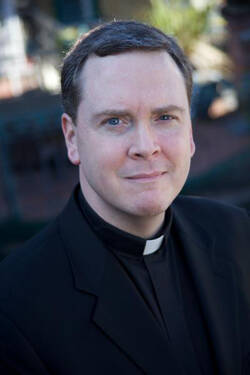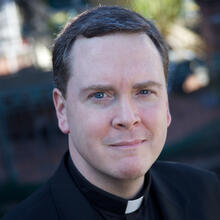Thanks be to God, this has been an autumn of firsts for America. In September we published a groundbreaking interview with Pope Francis; in October, our 56-page special issue on women in the life of the church marked the first time that we published an issue written entirely by women—except for the last page, which was by John W. Martens, our regular Word columnist.
The list of firsts continues with the present issue. This week marks the start of “The Living Word: Scripture in the Life of the Church,” a two-year, multi-platform project in collaboration with the American Bible Society.
“The Living Word” is a first in two senses. It is the first time America has undertaken such an ambitious program of content devoted to a single subject. We will produce original content across all our platforms: in print, on the Web, through social media, through video and through person-to-person events.
“The Living Word” is also a first in that America is co-sponsoring this project with an interdenominational Christian ministry that has been engaging people with God’s word for nearly 200 years.
The project also marks a first for the American Bible Society: “The Living Word” is one of the largest content efforts ever undertaken by A.B.S. in partnership with a Catholic media organization.
Our collaboration with the American Bible Society is a fruit of the Second Vatican Council. The council’s “Dogmatic Constitution on Divine Revelation” revolutionized Catholic biblical studies. Much of the past half-century of Catholic biblical scholarship has focused on reconciling the council’s teachings about Scripture and tradition with the various forms of modern biblical criticism. These efforts have greatly enriched the life of the church. Still, new challenges and opportunities have emerged. Five decades after declaring “access to sacred Scripture ought to be open wide to the Christian faithful,” the council’s call for universal access and engagement has yet to be fully answered. At the same time, the opportunities afforded by new media have never been greater. It is fitting, then, that the first article in this series should examine the achievements and unfulfilled potential of the council’s vision.
In the months ahead, “The Living Word” will be organized around five themes, each of which was treated in the council document.
Conversion through Scripture. How is the word of God converting and sustaining today’s Catholic Christians? What are their personal stories, their joyful accounts?
Praying with Scripture. How can we marry the church’s rich and varied traditions of Bible-based prayer with the specific needs of 21st-century U.S. Catholics and the promise of 21st-century technologies?
Worshiping with Scripture. How well is Scripture used in Catholic liturgy today? How can we encourage more biblically literate churchgoers?
Scripture and the Arts. How is Scripture influencing and inspiring a new generation of Catholic artists, poets, writers, architects and church designers?
Theology of Scripture. How can we promote a more robust theological understanding of divine revelation among Catholics? How can we better convey the relationship between Scripture and tradition?
As if that weren’t enough, this week marks yet another first. America welcomes our brother Adolfo Nicolás, S.J., superior general of the Society of Jesus, to our pages.
If all that seems a bit boastful, please forgive me. I’m just enormously proud of my colleagues here at America House, and I am equally excited to work with my new colleagues at The Bible House, the home of the American Bible Society. And, of course, none of this would be worthwhile or even possible without you. Thank you.








